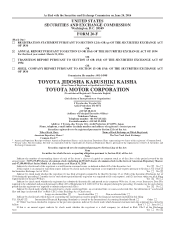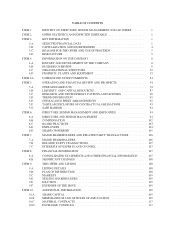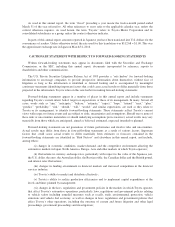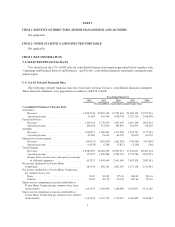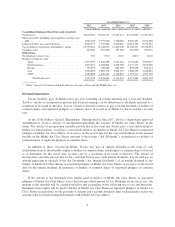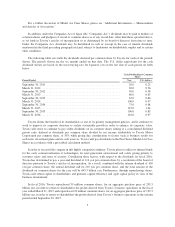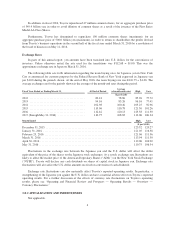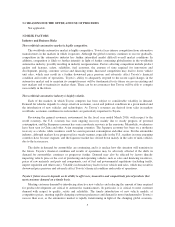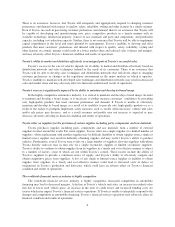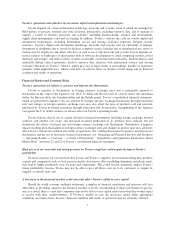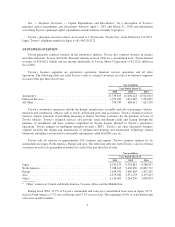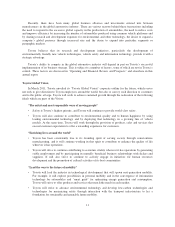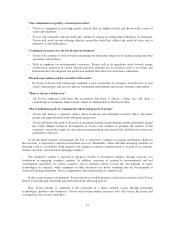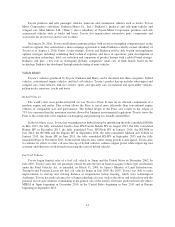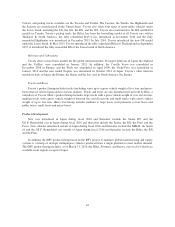Toyota 2015 Annual Report Download - page 11
Download and view the complete annual report
Please find page 11 of the 2015 Toyota annual report below. You can navigate through the pages in the report by either clicking on the pages listed below, or by using the keyword search tool below to find specific information within the annual report.There is no assurance, however, that Toyota will adequately and appropriately respond to changing customer
preferences and demand with respect to quality, safety, reliability, styling and other features in a timely manner.
Even if Toyota succeeds in perceiving customer preferences and demand, there is no assurance that Toyota will
be capable of developing and manufacturing new, price competitive products in a timely manner with its
available technology, intellectual property, sources of raw materials and parts and components, and production
capacity, including cost reduction capacity. Further, there is no assurance that Toyota will be able to implement
capital expenditures at the level and times planned by management. Toyota’s inability to develop and offer
products that meet customers’ preferences and demand with respect to quality, safety, reliability, styling and
other features in a timely manner could result in a lower market share and reduced sales volumes and margins,
and may adversely affect Toyota’s financial condition and results of operations.
Toyota’s ability to market and distribute effectively is an integral part of Toyota’s successful sales.
Toyota’s success in the sale of vehicles depends on its ability to market and distribute effectively based on
distribution networks and sales techniques tailored to the needs of its customers. There is no assurance that
Toyota will be able to develop sales techniques and distribution networks that effectively adapt to changing
customer preferences or changes in the regulatory environment in the major markets in which it operates.
Toyota’s inability to maintain well-developed sales techniques and distribution networks may result in decreased
sales and market share and may adversely affect its financial condition and results of operations.
Toyota’s success is significantly impacted by its ability to maintain and develop its brand image.
In the highly competitive automotive industry, it is critical to maintain and develop a brand image. In order
to maintain and develop a brand image, it is necessary to further increase customers’ confidence by providing
safe, high-quality products that meet customer preferences and demand. If Toyota is unable to effectively
maintain and develop its brand image as a result of its inability to provide safe, high-quality products or as a
result of the failure to promptly implement safety measures such as recalls when necessary, vehicle unit sales
and/or sale prices may decrease, and as a result revenues and profits may not increase as expected or may
decrease, adversely affecting its financial condition and results of operations.
Toyota relies on suppliers for the provision of certain supplies including parts, components and raw materials.
Toyota purchases supplies including parts, components and raw materials from a number of external
suppliers located around the world. For some supplies, Toyota relies on a single supplier or a limited number of
suppliers, whose replacement with another supplier may be difficult. Inability to obtain supplies from a single or
limited source supplier may result in difficulty obtaining supplies and may restrict Toyota’s ability to produce
vehicles. Furthermore, even if Toyota were to rely on a large number of suppliers, first-tier suppliers with whom
Toyota directly transacts may in turn rely on a single second-tier supplier or limited second-tier suppliers.
Toyota’s ability to continue to obtain supplies from its suppliers in a timely and cost-effective manner is subject
to a number of factors, some of which are not within Toyota’s control. These factors include the ability of
Toyota’s suppliers to provide a continued source of supply, and Toyota’s ability to effectively compete and
obtain competitive prices from suppliers. A loss of any single or limited source supplier or inability to obtain
supplies from suppliers in a timely and cost-effective manner could lead to increased costs or delays or
suspensions in Toyota’s production and deliveries, which could have an adverse effect on Toyota’s financial
condition and results of operations.
The worldwide financial services industry is highly competitive.
The worldwide financial services industry is highly competitive. Increased competition in automobile
financing may lead to decreased margins. A decline in Toyota’s vehicle unit sales, an increase in residual value
risk due to lower used vehicle price, an increase in the ratio of credit losses and increased funding costs are
factors which may impact Toyota’s financial services operations. If Toyota is unable to adequately respond to the
changes and competition in automobile financing, Toyota’s financial services operations may adversely affect its
financial condition and results of operations.
6

